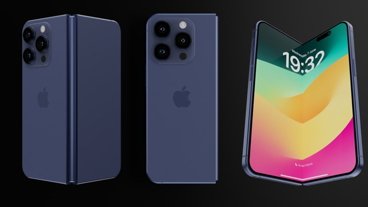The first was FBR Capital Markets analyst Craig Berger, who used a report Monday to predict Apple would reduce its production rate of the iPhone 3G by as much as 40% during the current December quarter — a three-month period where sales generally benefit from seasonality and the the mad holiday rush.
His calls were echoed Wednesday by fellow analyst Maynard Um at UBS Investment Research, who said his own investigation into the iPhone maker's component supply chain suggest build orders for the iPhone 3G may fall from 9 million during the prior quarter to 6.7 million - 7.3 million.
Unlike Berger, the UBS analyst used a portion of his note to explain the "obvious danger in making assumptions from supply chain chatter," or attempting to quantify forward looking iPhone demand by examining changes in Apple's orders for individual iPhone components rather than its precise orders for the fully assembled handsets, which are closely guarded.
For instance, there's often an unknown time lag between component orders and actual production, lower component orders could be the result of healthy component inventories already on hand at Apple's manufacturing facilities, and supply chain order and production plans can change on the drop of a dime.
"That said, recent supply chain cuts have proven accurate (at least directionally)," he wrote. "Hence, we believe recent data points may suggest unit volumes weaker than our current estimate of 5 million [for the December quarter]."
Um added that current build plans for Apple's March quarter, or the quarter immediately following the holiday shopping season, "appear to be low given channel inventory." However, he said he's less inclined to trust the accuracy of his data beyond the December quarter.
In his note to clients, the analyst also issued some comments on iPhone price cuts and Apple's surprisingly favorable selling expenses surrounding the touch-screen handset.
He noted that factors such as iPhone price cuts could result in greater demand elasticity, which would disrupt any build predictions for future quarters that are based on existing channel conditions. In fact, the analyst believes there will be a price cut on the handset in the near future, though he believes "operators may not necessarily pass on the cost-savings given already aggressive subsidies and pricing."
Meanwhile, Um is also keeping an eye on Cupertino-based company's operating expenses, and was surprised to find its "Selling, General & Administrative Expenses" (or SG&A) in line with its peers of approximately $20 per handset.
"We find it surprising that Apple is able to achieve this level of cost discipline at such an early stage in the iPhone lifecycle (RIMM and PALM experienced materially higher SG&A costs early in their product cycles - $25-$40 per handset)," he wrote.
He added that the company's well-established brand likely alleviates some advertising expenses, while only one handset SKU limits training costs of sales associates. However, should Apple look to further penetrate the high-end enterprise market, SG&A would likely rise "due to the 24/7 support requirements that most large enterprises require."
Um maintained his Neutral rating on shares of Apple with a $115 price target.
"Although we continue to believe Apple will be able to grow at a premium to the overall market and increase share gains going forward, we do not believe the company will be immune to the broader economic slowdown, which we believe is reflected in our 11% Mac unit growth expectation," he wrote.
 Slash Lane
Slash Lane






-m.jpg)






 Malcolm Owen
Malcolm Owen

 Amber Neely
Amber Neely
 Christine McKee
Christine McKee


 William Gallagher
William Gallagher
 Chip Loder
Chip Loder


-m.jpg)






56 Comments
Sounds reasonable at least in US- 3 new major touchscreen phones have/will have been introduced and people will now be even less likely to switch to an inferior network with all the bad publicity 3G/AT&T/iPhone has received.
How about a cutback to drain current inventory and introduce a 32GB version after the holidays?
Sounds ureasonable at least in US- 3 new major touchscreen phones have/will have been introduced and people will now be even less likely to switch to an inferior network with all the bad publicity 3G/AT&T/iPhone has received.
A lot of iPhone buyers won't do any research about the AT&T network, and will be more concerned about what color the phone comes in. It's hard to support your argument when the iPhone has demonstrated a significant ability to get people to switch carriers.
It's really easy to forget what a minority the people are who read AppleInsider. I'm a pretty demanding user. But I have no hesitation about giving AT&T a try when my contract is up with Verizon.
How about a cutback to drain current inventory and introduce a 32GB version after the holidays?
Or maybe introduce a new Nano phone on a different network. Other phone makers can sell different models of different networks- can Apple?
Two analysts have issued research notes to clients this week indicating that their checks with supply chain sources suggest forward looking iPhone build orders are experiencing some incremental weakness due to concerns about customer demand.
I wonder how much demand there would be for an iPod Touch 3G?
Would Verizon customers who don't like Vcast but don't want to switch to at&t be interested?
Here is what I am thinking...
$199 32GB iPod Touch 3G with 2 year at&t contract $30/month
$229 8GB iPod Touch
$299 16GB iPod Touch
$399 32GB iPod Touch